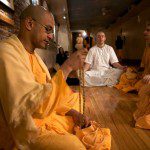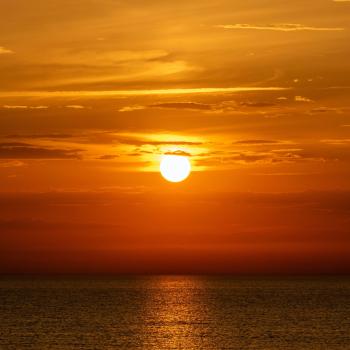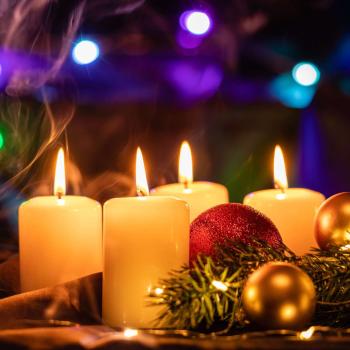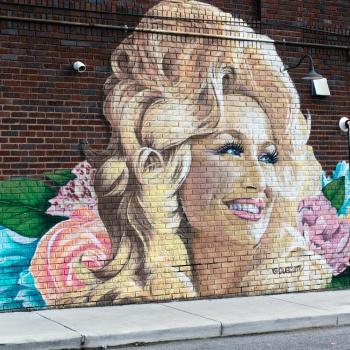 Is a city environment detrimental to a rich spiritual life? As someone who commutes to and works in New York City, it is easy to see how the distractions of the city could easily extinguish your spiritual light. But I found a group that is totally committed to following the spiritual path—and they not only work in New York City, they live there as well. They’re urban monks.
Is a city environment detrimental to a rich spiritual life? As someone who commutes to and works in New York City, it is easy to see how the distractions of the city could easily extinguish your spiritual light. But I found a group that is totally committed to following the spiritual path—and they not only work in New York City, they live there as well. They’re urban monks.
Now if I was “going monk”, I believe I’d follow the lead of Thomas Merton whose Trappist monastery was located in the hills of Kentucky. Give me a bucolic country setting where the loudest noises are the birds chirping at sunrise and the brightest light is the morning sun bursting through the window of my sparsely furnished room. I’m inclined to think it’s easier to find inner peace where there’s external peace.
That’s why you might be surprised to learn the urban monks I’m writing about live in a place seemingly ill-suited to the contemplative life, the Lower East Side of Manhattan. It’s a neighborhood that’s buzzing all the time, especially on weekends, when it’s jam-packed with mostly twenty-somethings out for a good time. The scene is lively and loud, with music blasting from clubs, sidewalks overflowing with boozy revelers and the streets jammed bumper-to-bumper with horn-blaring taxis and cars.
Yet there, on First Avenue near First Street, is precisely where you will find a community of Hindu monks, which begs the question: Why would a group committed to the austerity and solitude of the monastic life choose to live on the raucous Lower East Side of NYC?
An explanation comes from the chief resident there, Gadadhara Pandit Dasa (a.k.a. Pandit), who is the author of the book The Urban Monk. He says that the monastery’s location is no accident as its inhabitants practice what’s called the Bhakti tradition of Hinduism. According to Pandit:
It is recommended that some monks live in the city because that’s where people are most stressed and therefore need the most spiritual guidance. The city is a very intense place where everyone is constantly scrambling from one activity to another, always keeping themselves busy, often times leaving their spiritual pursuits by the wayside.
Being in New York City 40-plus hours a week, I can relate to how easy it might be to lose your spiritual compass amidst the crowds, the fast pace and the noise. So how do the monks do it? How do they keep their spiritual bearings and provide “sacred service” to the community?
It may have something to do with their tightly-scripted daily practice, which every one of the 15 or so monks who live in this tiny monastery follows. Their schedule is repeated seven days a week and goes something like this:
- 4:00-4:30 a.m. Rise and shine.
- 4:30-5:00 a.m. Wait your turn to hit the shower; put on a fresh robe before entering the temple room.
- 5:00-8:00 a.m. Meditation, followed by morning services, including a devotional practice of song and dance.
- 8:00-9:00 a.m. Additional meditation or yoga. Some monks enjoy a quick nap.
- 9:00 a.m.-5:00 p.m. Various activities including cooking and cleaning, teaching and counseling, and going out into the neighborhood to engage with the local population.
After dinner, the evening can include hours of additional mantra meditation, as they “focus their entire being on connecting with God.” Pandit claims that “the city can actually push one to greater levels of focus in one’s meditation” and that their work in Manhattan “can be very satisfying and even blissful” in spite of the ever-present roar of the city. He admits, though, that this spiritual route is not for everyone. It all depends on one’s purpose in life:
If one is aspiring to focus only on one’s own individual meditation and spiritual practice, then a busy city environment can definitely be counterproductive. However, if one is residing in a city for the purpose of helping people, then there’s no better place.
Pandit almost had me convinced of the merits of city “monkdom”—but while writing this, I took a lunchtime stroll around the jam-packed streets of midtown Manhattan. It had me yearning for a quieter place to practice my spiritual pursuits, though not as a country monk. My home near the beach perfectly fits the bill. Regardless, to borrow a phrase from The Big Lebowski: I take comfort in knowing the urban monks are out there.
For a story on monks of a different stripe, see my recent story on The Bogus Buddhists of Broadway.
















